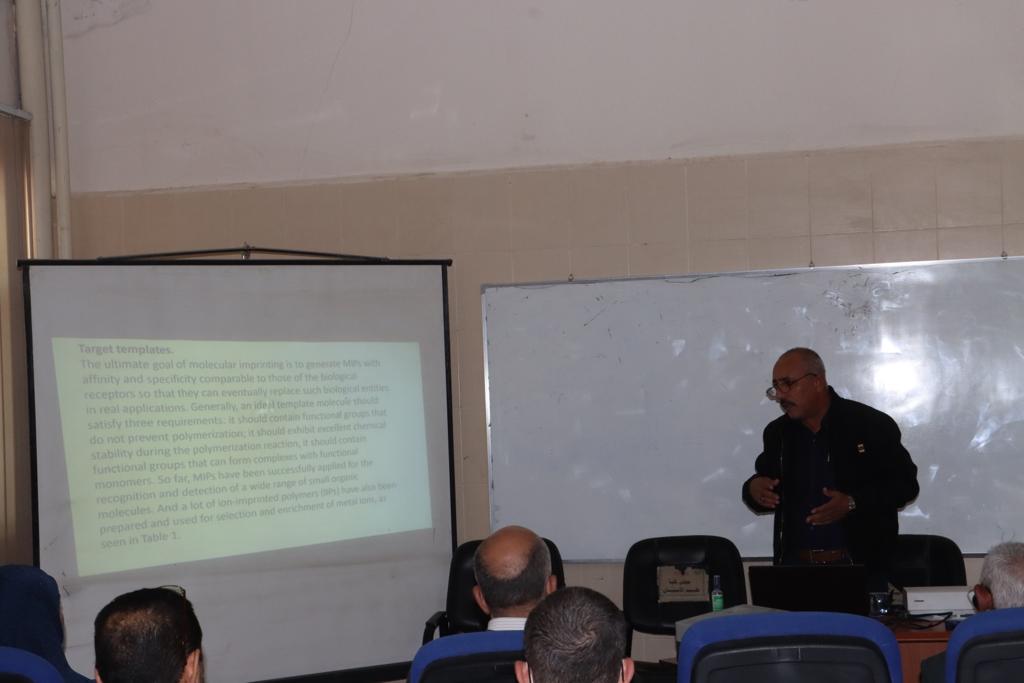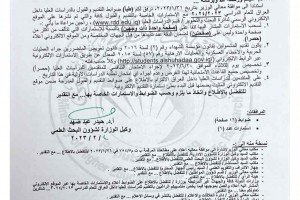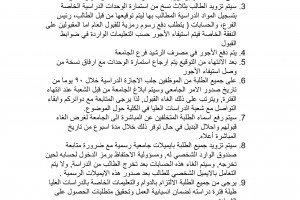
The Pharmaceutical Chemistry Department at the College of Pharmacy at the University of Basrah organized a panel discussion entitled (Printed Polymeric Particles in Pharmaceutical Industry Applications) with the participation of researchers and specialists.
The panel discussion included a lecture delivered by Assistant Professor Dr. Maan Abdel-Razzaq, which included a detailed explanation about Matrix Molecularly Imprinted Polymer (MIP), which is a polymer that has been processed using molecular fingerprinting technology that leaves cavities with an affinity for the chosen "template" molecule.
The process typically involves initiating the polymerization of the monomers in the presence of a template molecule which is then extracted, leaving behind complementary cavities. These polymers have an affinity for the parent molecule and have been used in applications such as chemical separation, catalysis or molecular sensors. Oil imprinting is the process of creating an impression within a solid or gelatinous material, the size, shape and charge distribution of which corresponds to a template particle (usually present during polymerization). The result is a synthetic receptor that is able to bind to a target molecule, and which matches the binding site with a high degree of accuracy and specificity. The interactions between the polymer and the template are similar to those between antibodies and antigens, and consist of electrostatic interactions, hydrogen bonds, van der Waals forces, and hydrophobic interactions
One of the greatest advantages of synthetic receptors over naturally occurring receptors is the freedom of molecular design. Their frameworks are not limited to proteins, and a variety of skeletons (such as carbon chains and fused aromatic rings) can be used. Thus, stability, flexibility and other properties are freely modified according to need. Even functional groups that do not exist in nature can be used in these synthetic compounds. Furthermore, when necessary, activity can be provided in response to external stimuli (photoirradiation, pH change, electric or magnetic field, and others) using appropriate functional groups.

.jpeg)







